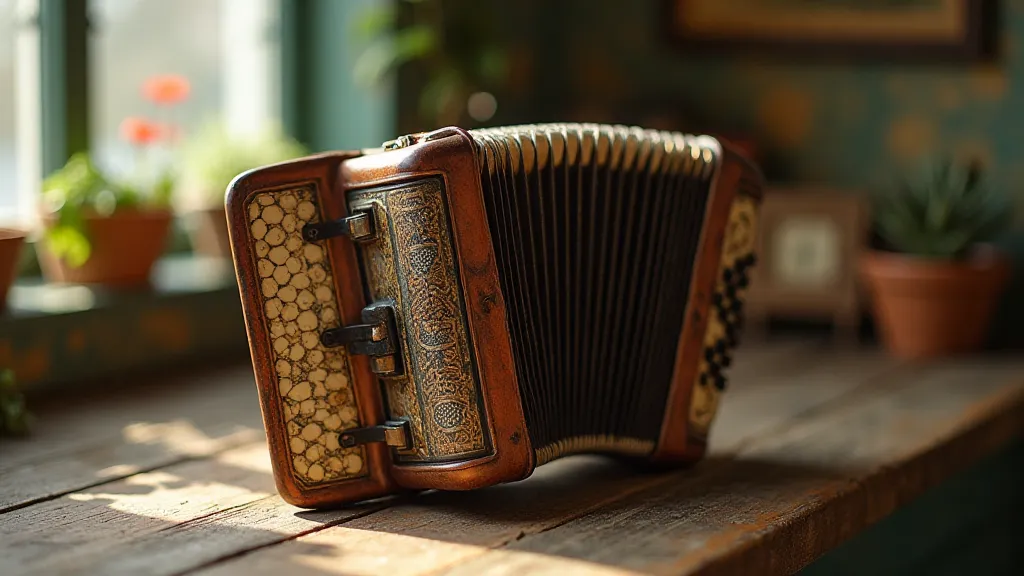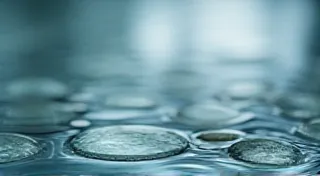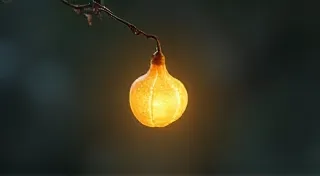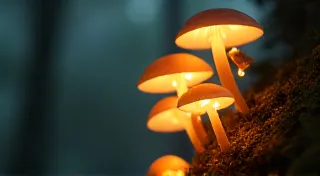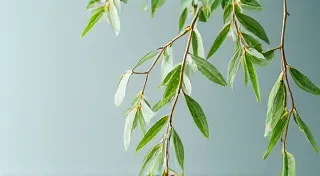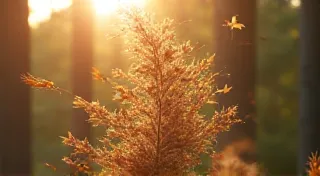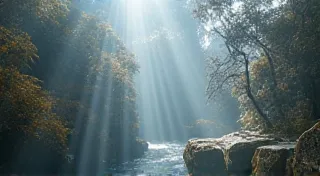The Cartographer's Palette: Mapping Color Harmonies in Miniature Scenes
There’s a particular feeling one gets when handling an antique accordion. It’s more than just the weight of the wood, the cool slickness of the bellows, or the glint of aged brass. It’s the echo of countless performances, the memory of hands deftly manipulating the keys to coax melodies into being. Each button, each reed, tells a story. Just like a garden, meticulously planned and beautifully executed, an accordion embodies the power of intention and craftsmanship. And just as a skilled cartographer uses color to represent terrain and atmosphere on a map, we, as miniature gardeners, can harness the principles of color theory to bring our dollhouse landscapes to life.
My own fascination with miniature gardening began with a broken bellows on a vintage Hohner accordion I inherited from my grandfather. He’s gone now, but I remember watching him, mesmerized, as he would coax melancholic tunes from that instrument. While attempting (and largely failing) to repair it, I was struck by the intricate detail - the tiny screws, the precisely cut reeds, the layers upon layers of carefully positioned felt. It sparked a desire to create something equally detailed and intricate, something tangible. That's when I turned to miniature gardening.

Understanding Color Harmonies – Beyond ‘Pretty’
Far too often, miniature garden design falls into the trap of simply choosing plants that ‘look pretty.’ While aesthetics are important, understanding color theory elevates a miniature garden from pleasant to truly captivating. Think of the masters of landscape painting - Monet, Van Gogh, Constable. Their genius wasn’t just in capturing a scene, but in manipulating color to evoke specific emotions and moods. We can apply those same principles to our miniature landscapes.
The basics are simple: Primary colors (red, yellow, blue) form the foundation. Secondary colors (green, orange, purple) are created by mixing primaries. Tertiary colors are created by mixing a primary and a secondary. But it’s the *relationships* between these colors that truly matter.
Color Schemes to Inspire Your Miniature World
Let's explore some common color schemes, and how you can use them in your miniature gardens. These aren't rules, but guidelines to spark your creativity. Consider your overall dollhouse style – Victorian elegance, rustic cottage, whimsical fairy garden – and choose a scheme that complements it.
Monochromatic Harmony
A monochromatic scheme uses variations of a single color. For example, a miniature English garden might be built around shades of green, from the deep emerald of ferns to the lighter lime of new growth. Miniature moss cultivation thrives in this approach, allowing for a wide range of textural greens. Think about using different leaf shapes and textures to add visual interest within the single color family.
Complementary Contrasts
Complementary colors sit opposite each other on the color wheel (red and green, blue and orange, yellow and purple). They create high contrast and visual excitement. A miniature desert scene could use the fiery orange of miniature succulents against a backdrop of cool blue stones. However, use caution – too much contrast can be jarring. Balance strong contrasts with softer hues.
Analogous Serenity
Analogous colors are adjacent to each other on the color wheel (e.g., blue, blue-green, green). They create a harmonious and calming effect. A miniature woodland scene featuring bluebells (purple-blue), ferns (green), and perhaps a touch of lavender (purple) would embody this tranquility. These schemes often work well with indoor miniature garden designs, creating a peaceful atmosphere within a dollhouse.
Triadic Vibrancy
Triadic schemes use three colors equally spaced on the color wheel (e.g., red, yellow, blue). They offer vibrancy and complexity. This can be challenging to execute well in miniature, but if handled delicately, it can create a truly unique and eye-catching scene. Perhaps a miniature carnival garden, utilizing the bold hues of red, yellow, and blue in a playful and unexpected way.
Scale Model Flower Pots: Color as Texture
Don't overlook the color of your containers! Scale model flower pots can act as anchors for your color scheme. A brightly colored ceramic pot can pop against a backdrop of muted greens, while terracotta pots add a rustic charm. Consider using a limited palette for your pots to maintain cohesion. The material of the pot itself matters too – glazed ceramic, rough-hewn clay, weathered stone – each contributes to the overall mood.
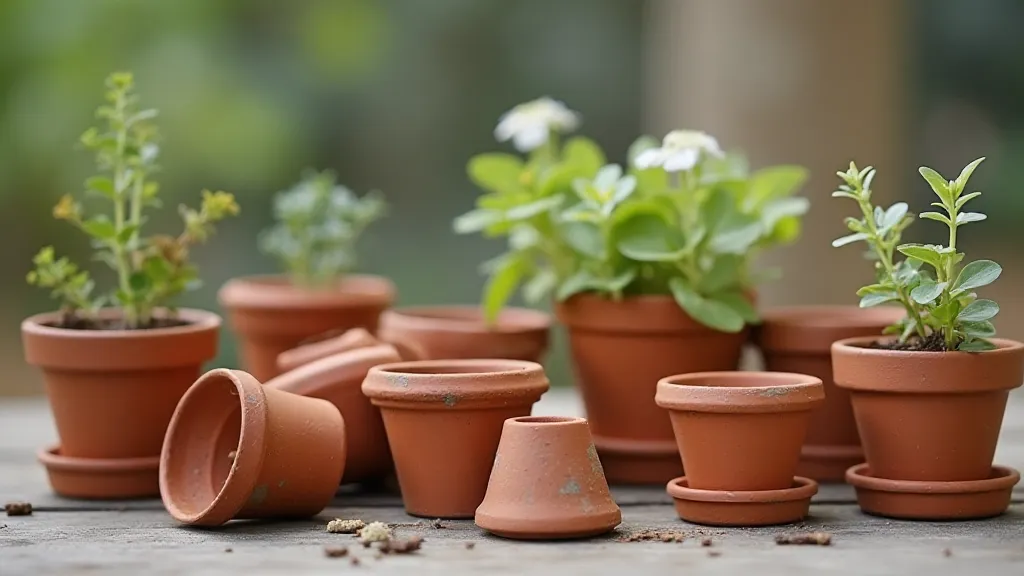
Miniature Bonsai Techniques and Greenhouses – Color in Context
Creating a miniature landscape isn't just about plant color; it’s about the entire scene. Mastering training miniature trees for graceful forms can elevate your garden from simple to sublime, allowing you to precisely control the form and color of your plants. The careful pruning and shaping, the strategic use of moss, and the selection of complementary materials all contribute to a sense of artistic intention. Consider incorporating a miniature greenhouse – perhaps a Victorian-style conservatory or a rustic potting shed – to provide a backdrop and a focal point for your miniature world. This allows you to control light and moisture levels, which directly impacts color intensity and overall plant health.
The Science of Color in Miniature Ecosystems
The color we perceive in our miniature gardens isn’t just a matter of pigment; it’s influenced by light, soil composition, and even the air quality within the dollhouse. Different soils reflect light differently, impacting the vibrancy of plant colors. Similarly, the humidity within a closed dollhouse environment can affect the transpiration rate of plants, influencing their overall health and appearance. Understanding these subtle interactions allows us to fine-tune our miniature landscapes to achieve the desired effect. For instance, adding a small dish of water can increase humidity and deepen the color of some plants, while strategically placed mirrors can amplify existing light sources.
Embracing Imperfection: The Beauty of a Storytelling Landscape
Just as a well-loved antique accordion carries the echoes of countless performances and the patina of time, our miniature gardens shouldn't strive for sterile perfection. The slight droop of a leaf, the unexpected bloom of a flower, the subtle discoloration of a pot – these imperfections tell a story. They hint at the passage of time and the resilience of nature. A miniature landscape is a living ecosystem, and just like any ecosystem, it’s constantly evolving. It’s a testament to the beauty of imperfection and the power of storytelling.
Restoring a Past: Lessons from Accordions and Miniature Gardens
Just as a craftsman patiently restores an antique accordion, bringing its voice back to life, we can breathe new life into our miniature gardens. Sometimes, a simple pruning or a change in soil mixture can make all the difference. Understanding the science of plant growth – the interplay of light, water, and nutrients – is as vital as understanding the principles of color theory. And when considering the overall design, incorporating elements like water features in miniature worlds can dramatically enhance the tranquility and visual appeal of your miniature world.
My grandfather’s accordion sits on a shelf now, partially restored, a testament to the power of dedication and a reminder of the beauty of imperfection. And in my miniature gardens, I strive to capture that same spirit – a sense of history, a touch of melancholy, and a deep appreciation for the intricate details that make each scene unique. Creating these miniature worlds isn’t just about aesthetics; it’s about storytelling, about connecting with the past, and about finding joy in the small things.
The beauty lies not just in the perfectly formed miniature flower pot, or the precisely trimmed bonsai, but in the story it tells, just as a well-loved accordion tells the story of a lifetime spent making music.
